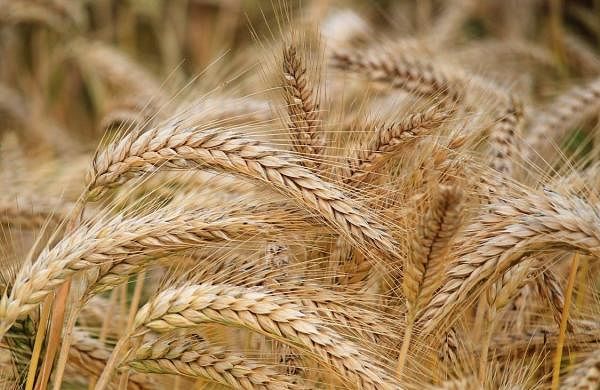[ad_1]
Express News Service
NEW DELHI: India has allowed wheat flour export from imported wheat. The export of flour or Atta is with a rider that only exports fortified flours or multigrain Atta. Industry experts say the decision has been made under pressure from export-oriented flour mills based out of coastal regions.
On March 23, the Directorate General of Foreign Trade under the Department of Commerce issued a public notice about the amendment in the wheat flour export condition.
The notice states that exported wheat should contain at least 80 percent or more whole wheat Flour (Atta) and other ingredients being added like soya flour, oatmeal, fenugreek powder, vitamins etc.
These micronutrients for the fortification of wheat should be sourced domestically.
The notice also states that the export description in the shipping bill clearly mentions the percentage content of whole wheat flour and other ingredients being added.
India banned the export of wheat last year after the domestic price of wheat started surging. Then, in August, Prime Minister Narendra Modi restricted wheat flour export on the pretext of the rising domestic price of flour.
However, in October 2022, India allowed a similar arrangement of export of wheat flour. It has allowed export-oriented wheat flour millers to export flour made from imported wheat.
“It is difficult for millers based in UP or Punjab or MP as it is profitable for us to procure wheat locally and sell it” says Pramod Vaish, President of All India Roller Flour Miller Association.
Other Industry experts say in the pretext of possible lower wheat production, flour millers based in coastal regions like Gujarat, Maharashtra, and Karnataka might benefit.
Due to inclement weather in February and March, Experts say India’s wheat production is going to be impacted in both quality as well as quantity.
NEW DELHI: India has allowed wheat flour export from imported wheat. The export of flour or Atta is with a rider that only exports fortified flours or multigrain Atta. Industry experts say the decision has been made under pressure from export-oriented flour mills based out of coastal regions.
On March 23, the Directorate General of Foreign Trade under the Department of Commerce issued a public notice about the amendment in the wheat flour export condition.
The notice states that exported wheat should contain at least 80 percent or more whole wheat Flour (Atta) and other ingredients being added like soya flour, oatmeal, fenugreek powder, vitamins etc.googletag.cmd.push(function() {googletag.display(‘div-gpt-ad-8052921-2’); });
These micronutrients for the fortification of wheat should be sourced domestically.
The notice also states that the export description in the shipping bill clearly mentions the percentage content of whole wheat flour and other ingredients being added.
India banned the export of wheat last year after the domestic price of wheat started surging. Then, in August, Prime Minister Narendra Modi restricted wheat flour export on the pretext of the rising domestic price of flour.
However, in October 2022, India allowed a similar arrangement of export of wheat flour. It has allowed export-oriented wheat flour millers to export flour made from imported wheat.
“It is difficult for millers based in UP or Punjab or MP as it is profitable for us to procure wheat locally and sell it” says Pramod Vaish, President of All India Roller Flour Miller Association.
Other Industry experts say in the pretext of possible lower wheat production, flour millers based in coastal regions like Gujarat, Maharashtra, and Karnataka might benefit.
Due to inclement weather in February and March, Experts say India’s wheat production is going to be impacted in both quality as well as quantity.
[ad_2]
Source link

